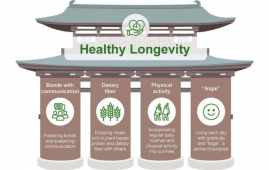

How New Data Is Reframing Malaria Prevention Efforts in Africa
Malaria prevention remains one of Africa’s most urgent public health priorities, especially for women, young children, and underserved communities. A newly paraphrased analysis highlights how African biostatisticians are generating causal evidence, not assumptions, to determine whether malaria messaging truly increases the use of insecticide-treated nets (ITNs). This shift marks a major milestone in evidence-driven decision-making across high-burden regions.
Explore All Public Health CME/CE Conferences and Online Courses
What the Latest Biostatistics Research Reveals
Edson Mwebesa, a Fellow at the Sub-Saharan Africa Advanced Consortium for Biostatistics (SSACAB), applied Propensity Score Matching (PSM) to Uganda’s 2018–19 Malaria Indicator Survey. His objective was to measure, rather than infer, whether exposure to malaria prevention messages influences protective behavior among women of reproductive age and caregivers of children under five.
Baseline data showed that 37.6% of women and 37.9% of caregivers had received malaria messaging within the previous six months. ITN usage, although higher, fell short of universal protection, with 69.3% of women and 71.8% of children reporting that they slept under an ITN the night before the survey.
By matching women with similar socioeconomic and demographic characteristics, PSM isolated the effect of messaging itself. Results demonstrated measurable impact:
- Women exposed to malaria messaging were 5.1% more likely to use an ITN.
- Caregivers’ exposure increased ITN usage among children by 4.3%.
These differences translate to tens of thousands of additional protected households nationwide, reducing both clinical and financial malaria burdens.
Why This Matters for Policymakers and HCPs
The findings reinforce the value of targeted communication, especially through high-reach channels. Radio emerged as the primary source of messaging, followed by community health workers and interpersonal communication initiatives, while digital platforms remained underutilized. For public health professionals, nurses, and policymakers, this causal evidence provides a clear direction for resource allocation.
Professor Tobias Chirwa of the Wits School of Public Health notes that this is the result of strengthened African data systems and growing local analytical capacity. As Africa observes African Statistics Day, these insights demonstrate how home-grown biostatistics can guide more equitable and effective malaria prevention strategies.
Strengthening Communication to Improve Malaria Prevention
As malaria continues to affect households, healthcare systems, and economies, this research underscores the importance of well-designed, evidence-based communication campaigns. The emergence of robust causal methods, led by African experts, marks a transformative step in malaria prevention and public health planning.
Source:
more recommended stories
 World Summit Outlines Core Principles for Healthy Longevity
World Summit Outlines Core Principles for Healthy LongevityWhy Healthy Longevity Demands a New.
 Gut Immune Cells and Long-Lasting Antiviral Protection.
Gut Immune Cells and Long-Lasting Antiviral Protection.Breakthrough Findings on How Gut Immune.
 Mild Pancreatic Duct Dilatation Signals Higher Cancer Risk
Mild Pancreatic Duct Dilatation Signals Higher Cancer RiskEarly Structural Changes Offer Critical Clues.
 Ultra-Processed Foods in Mediterranean Youth: Risks
Ultra-Processed Foods in Mediterranean Youth: RisksThe Mediterranean region is widely recognized.
 Intensive mind-body retreat rapidly alters brain function
Intensive mind-body retreat rapidly alters brain functionAn intensive mind-body retreat combining meditation,.
 Longevity Gene May Extend Lifespan Without Strict Diets
Longevity Gene May Extend Lifespan Without Strict DietsThe search for safe and realistic.
 Cholesterol-Lowering Drugs May Help Reduce PFAS Levels
Cholesterol-Lowering Drugs May Help Reduce PFAS LevelsPer- and polyfluoroalkyl substances (PFAS) continue.
 Citrus and Grape Compounds Help Prevent Type 2 Diabetes
Citrus and Grape Compounds Help Prevent Type 2 DiabetesA new clinical trial highlights the.
 Genetic Diversity Explains Obesity Risk Differences
Genetic Diversity Explains Obesity Risk DifferencesCross-ancestry Study Identifies Novel Obesity Genes.
 Meniscal Tear and OA Pain Improved by Home Exercise
Meniscal Tear and OA Pain Improved by Home ExerciseHome Exercise Proves Effective for Knee.

Leave a Comment